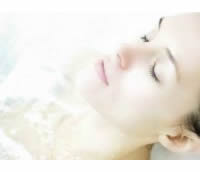Most of us assume that alcholols in your skin care products will result in dry, irritated and inflamed skin. However, there are good and bad alcohols.
The bad alcohols include ethanol, denatured alcohol, ethyl alcohol, methanol, benzyl alcohol, isopropyl alcohol, and sd alcohol, which not only can be extremely drying and irritating to skin, but may be cytotoxic. Alcohol helps ingredients like retinol and vitamin C penetrate into the skin more effectively, but it does that by breaking down the skin’s barrier—destroying the very substances that keep your skin healthy.
With regular exposure to alcohols in your skin care products, cleansing becomes a damaging ordeal. Once alcohol dissolves your skin’s barrier, it can no longer provide a seal against further damage from outside elements, this allows other substances like cleansing agents and water to cause further damage to the deeper layers of skin, further eroding the skin’s barrier. For those with oily skin, alcohol can stimulate oil production at the base of the pore, causing over production of sebum.
The good alcohols include cetyl, stearyl and cetearyl. These are known as fatty alcohols, and their effects on the skin are quite different from those of ethyl alcohol. When fats and oils (see fatty acid) are chemically reduced, they become a group of less-dense alcohols called fatty alcohols that can have emollient properties or can become detergent cleansing agents.
Cetyl Alcohol
Extracted from coconut oil, it is an emollient that is included in skin care products to stabilize the formulations or to alter their consistencies, or to increase their foaming capacity. It is often included in lotions, hand creams, shampoos.
Stearyl Alcohol
Stearyl alcohol is also derived from coconut oil. Because it is an emollient as well as an emulsifier, it can be substituted for cetyl alcohol to firm skin care formulations. It is mostly found in creams and conditioners.
Cetearyl Alcohol
Cetearyl alcohol is a white, waxy, solid material in the form of flakes. It is oil soluble, but it is not water-soluble. It is a mixture of fatty alcohols. Cetearyl alcohol is an emulsifying wax that is used to soften thick formulas like skin ointments. Derived from natural oils and fats, it is very efficient in stabilising skin care formulations because it gives an emollient feel to the skin. It is widely used in creams and cleansers.


